Dr. Phil Zeltzman’s Blog
Your dog had WHAT removed?
Kado, a 4 year old Husky, had a tumor (grade 2 mast cell tumor) near the tip of his prepuce (ie sheath). It is actually a common tumor, but a tricky location.
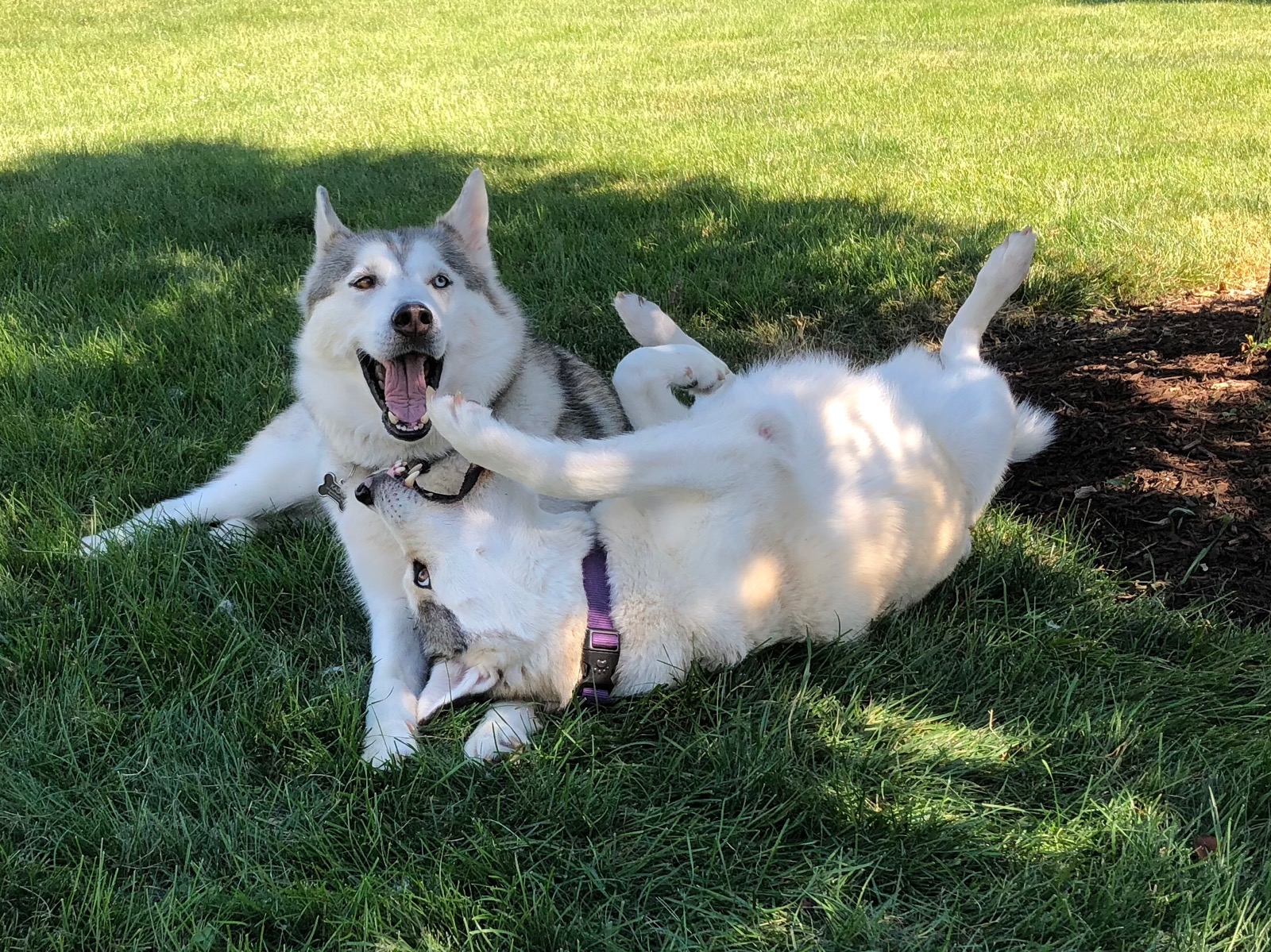
The only way to completely remove it was to remove the entire prepuce, and therefore, sacrifice (i.e. remove) his entire penis. A new opening was created to allow him to pee (urethrostomy). One year after surgery, his owner KM writes:
“Hi Dr. Zeltzman, It has been a year since Kado’s surgery (see picture above). He is doing great. He will be celebrating his 5th birthday on Monday. He is a very happy dog and full of energy and loves playing with our other dog. We just love him so much.”
So? Crazy surgery? Or life-saving procedure?
Phil Zeltzman, DVM, DACVS, CVJ, Fear Free Certified

Dr. Phil Zeltzman is a traveling veterinary surgeon in Pennsylvania & New Jersey. An award-winning author, he loves to share his adventures in practice along with information about vet medicine and surgery that can really help your pets. Dr. Zeltzman specializes in orthopedic, neurologic, cancer, and soft tissue surgeries for dogs, cats, and small exotics. By working with local family vets, he offers the best surgical care, safest anesthesia, and utmost pain management to all his patients. Sign up to get an email when he updates his blog, and follow him on Facebook, too!
Didder the broken kitty makes a full recovery
Didder, a beautiful 2 year old indoor/outdoor cat, was found limping.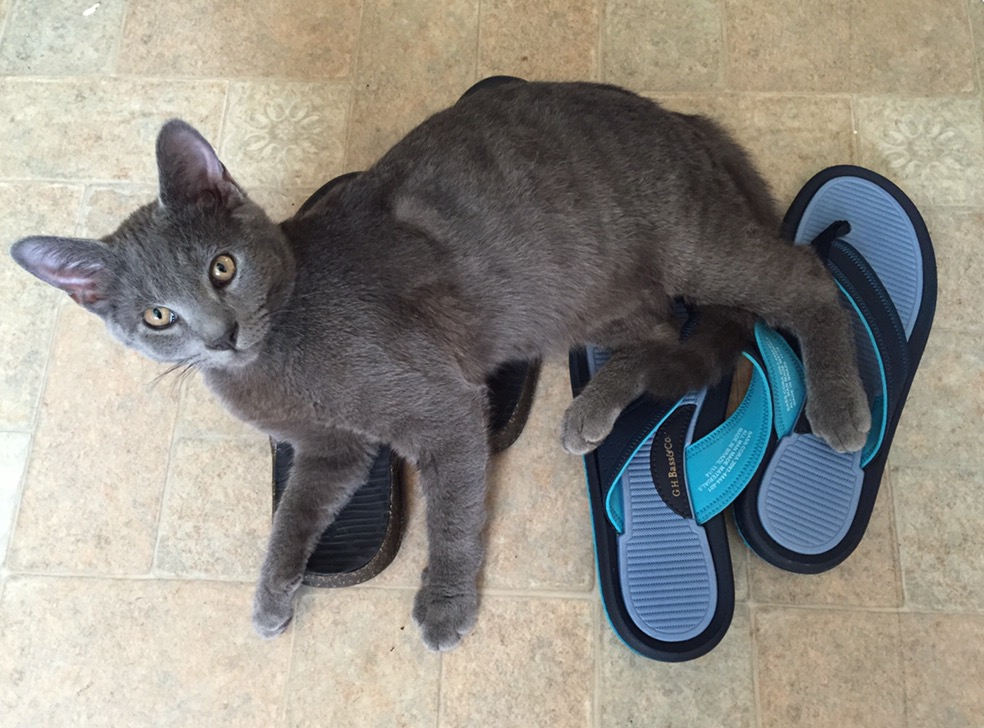
His femur (thigh bone) was absolutely shattered (see preop pictures). How many pieces can you count?
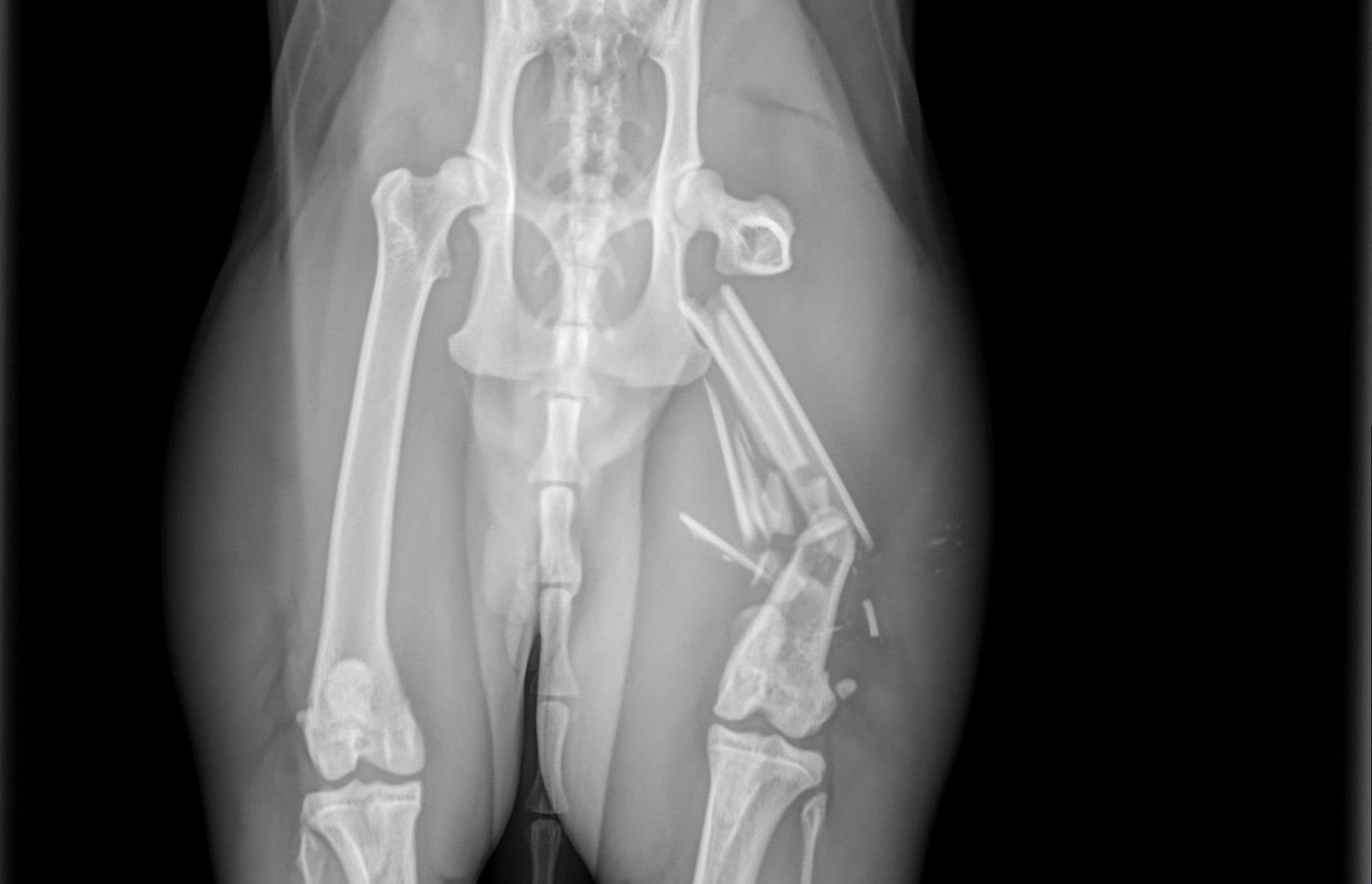
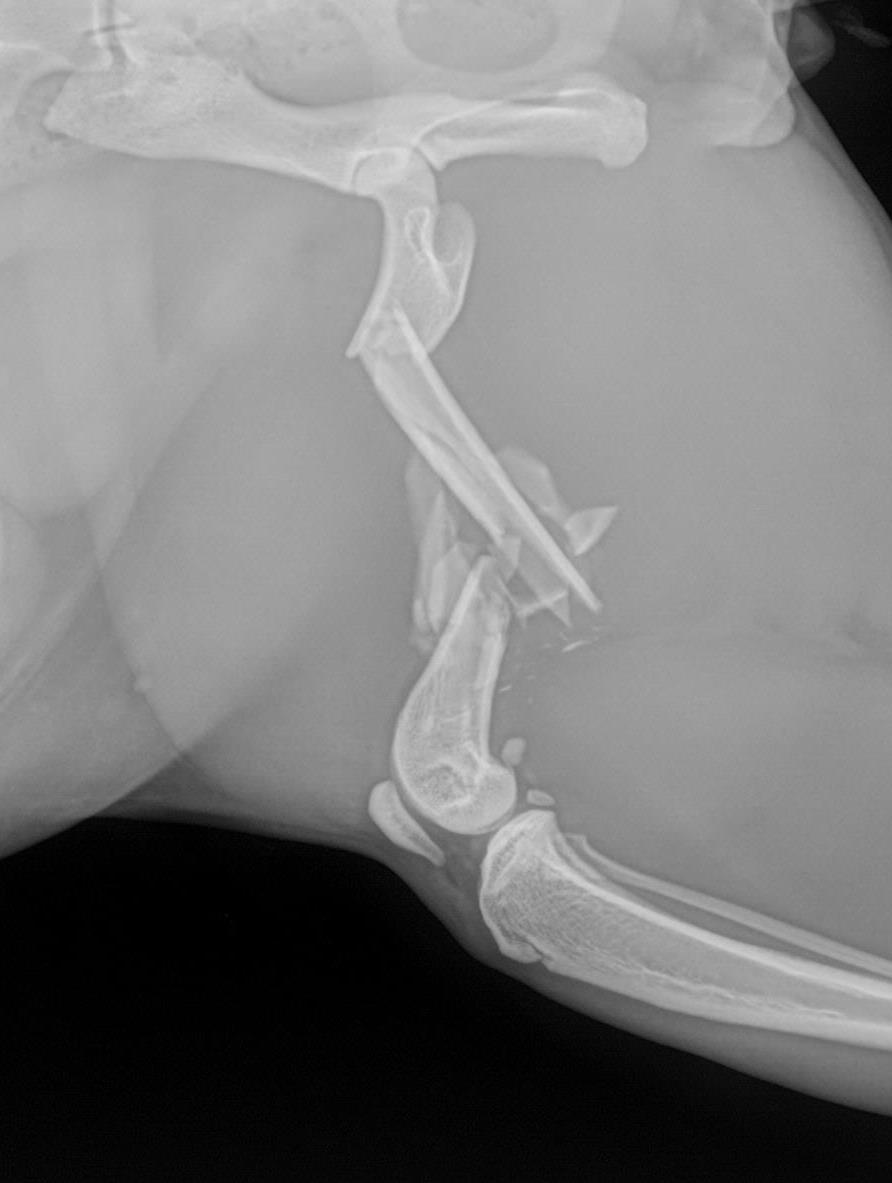
I count at least 15 pieces!
If that wasn’t enough, he also suffered from a fracture of the mandible (lower jaw).
We discussed leg amputation as one possible option. But I thought that we should give Ditter a chance, and try to put this thigh bone back together. And that’s what his owner decided to do. So we took this poor kitty to surgery.
His femur was repaired with a plate, 10 screws, 3 wires and 1 pin (which later had to be removed). To speed up healing, a bone graft was added.
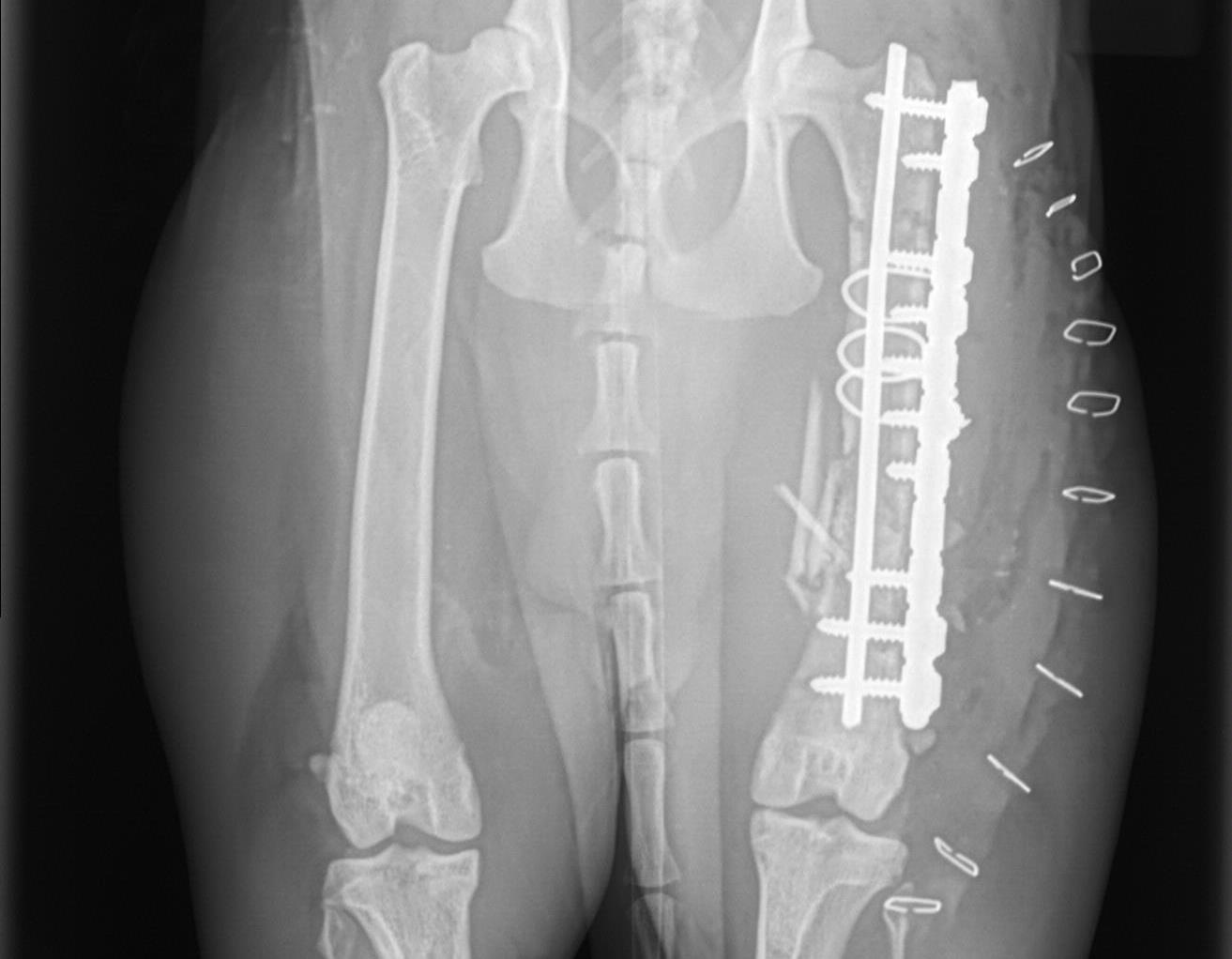
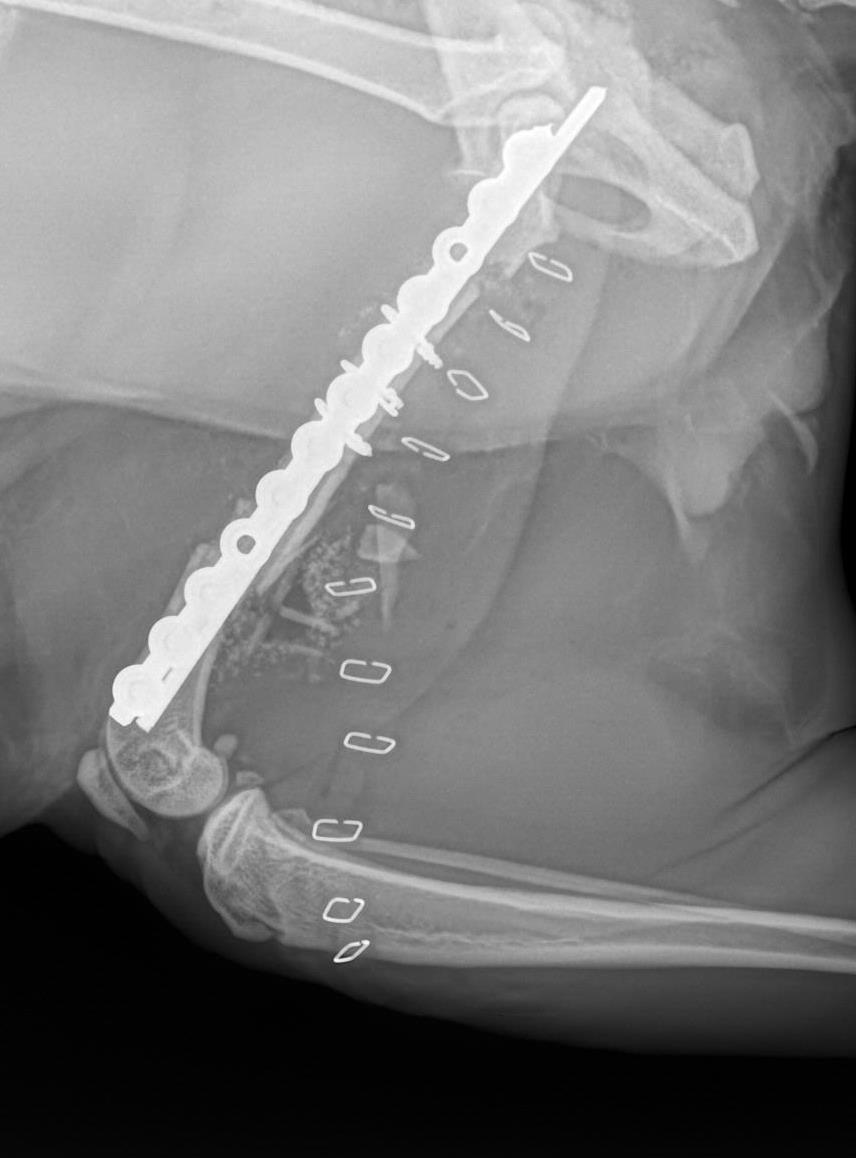
His jaw fracture was wired back together. He had an uneventful surgery and anesthesia. He then had to rest very strictly for 2 months to allow the bones to heal.
Didder’s owner learned from this experience, and wisely decided to keep Didder indoors from now on. Stories like Didder’s are sadly not rare in my practice, and there is no question in my mind that cats are far safer indoors.
Two years after surgery, Didder’s owner writes: (…) “You’d never know anything happened to Didder – which is greater than any outcome we could have imagined the sad night we found him so horribly broken! (…) Our family is grateful that you were able to successfully rebuild our baby boy.”
Phil Zeltzman, DVM, DACVS, CVJ, Fear Free Certified

Dr. Phil Zeltzman is a traveling veterinary surgeon in Pennsylvania & New Jersey. An award-winning author, he loves to share his adventures in practice along with information about vet medicine and surgery that can really help your pets. Dr. Zeltzman specializes in orthopedic, neurologic, cancer, and soft tissue surgeries for dogs, cats, and small exotics. By working with local family vets, he offers the best surgical care, safest anesthesia, and utmost pain management to all his patients. Sign up to get an email when he updates his blog, and follow him on Facebook, too!
Beware of porcupines!
One of my nurses who works at an emergency clinic told me a crazy story that is a great reminder this summer.

She had seen yet another curious dog who couldn’t resist the urge to play with a porcupine… Of course, porcupines always win. The dog’s head, lips and tongue were covered in quills.
Depending on where you live, porcupines may be coming out of the woodwork. Dogs often think of a porcupine as a playmate. This could be very painful mistake. I suspect the picture tells the whole story.
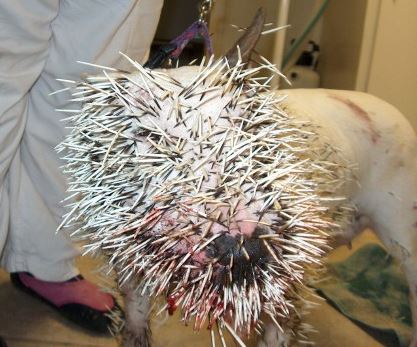
This is a fairly classic situation at emergency clinics in my area (Pennsylvania and New Jersey). The Poconos are a beautiful mountain range but there are full of porcupines. The treatment for this situation is to anesthetize the dog, and remove the quills, one by one. And when there are hundreds of quills, it’s a lengthy procedure!
The bigger problem with porcupine quills is that they can occasionally migrate through the body. I remember participating in a surgery at the Colorado vet school, where a quill was literally inside the wall of the heart!
So please be careful, please keep your dog on a leash and please never ever think that your dog will learn from one bad experience. Experience proves that there are many repeat offenders, summer after summer…
Porcupines may be fascinating creatures, but they have no intention of playing fetch with your dog.
Be safe.
Phil Zeltzman, DVM, DACVS, CVJ, Fear Free Certified

Dr. Phil Zeltzman is a traveling veterinary surgeon in Pennsylvania & New Jersey. An award-winning author, he loves to share his adventures in practice along with information about vet medicine and surgery that can really help your pets. Dr. Zeltzman specializes in orthopedic, neurologic, cancer, and soft tissue surgeries for dogs, cats, and small exotics. By working with local family vets, he offers the best surgical care, safest anesthesia, and utmost pain management to all his patients. Sign up to get an email when he updates his blog, and follow him on Facebook, too!
5 (more) tips every cat owner should know
Cats are very independent and at times they may seem indestructible. But the truth is, they are just as fragile as any other pet. Many conditions require a surgeon to fix things up. Here are 5 more tips to help your cat avoid visiting your favorite vet or surgeon.

6. Mass removal
When skin masses are allowed to grow, they may become so large that an amputation is the only option. It stands to reason that a small mass requires a much less invasive surgery than a large mass, so don’t procrastinate.
7. Avoid fights
Cats are more fragile than they look. They can get into a fight with a housemate — canine or feline — causing extensive damage. Bites, although they may seem minimal on the outside, can go very deep and cause serious internal damage. Solutions include feeding your pets in different locations or at different times. Again, please keep your kitty indoors.
8. Recognize pain and suffering
Most cats are very stoic. They may hide, or move less, or stop eating. It can be very difficult, but is very important to recognize when they are suffering. Don’t procrastinate, seek help as soon as you notice something abnormal.
9. Get pet insurance
Pet insurance can make all of the difference in your cat’s life. If you cannot afford thousands of dollars in emergency or medical care, please consider getting pet insurance. And do your homework, as there are some really bad and really good companies out there.
10. Know thy enemy
Anesthesia is not the enemy. Surgery is not the enemy. Your cat’s condition is the enemy. We are here to help you choose the best weapon to fight the enemy.
Phil Zeltzman, DVM, DACVS, CVJ, Fear Free Certified

Dr. Phil Zeltzman is a traveling veterinary surgeon in Pennsylvania & New Jersey. An award-winning author, he loves to share his adventures in practice along with information about vet medicine and surgery that can really help your pets. Dr. Zeltzman specializes in orthopedic, neurologic, cancer, and soft tissue surgeries for dogs, cats, and small exotics. By working with local family vets, he offers the best surgical care, safest anesthesia, and utmost pain management to all his patients. Sign up to get an email when he updates his blog, and follow him on Facebook, too!
5 tips every cat owner should know
Cats are very independent and at times they may seem indestructible. But the truth is, they are just as fragile as any other pet. Many conditions require a surgeon to fix things up. Here are 5 tips to help your cat avoid visiting your favorite vet or surgeon.
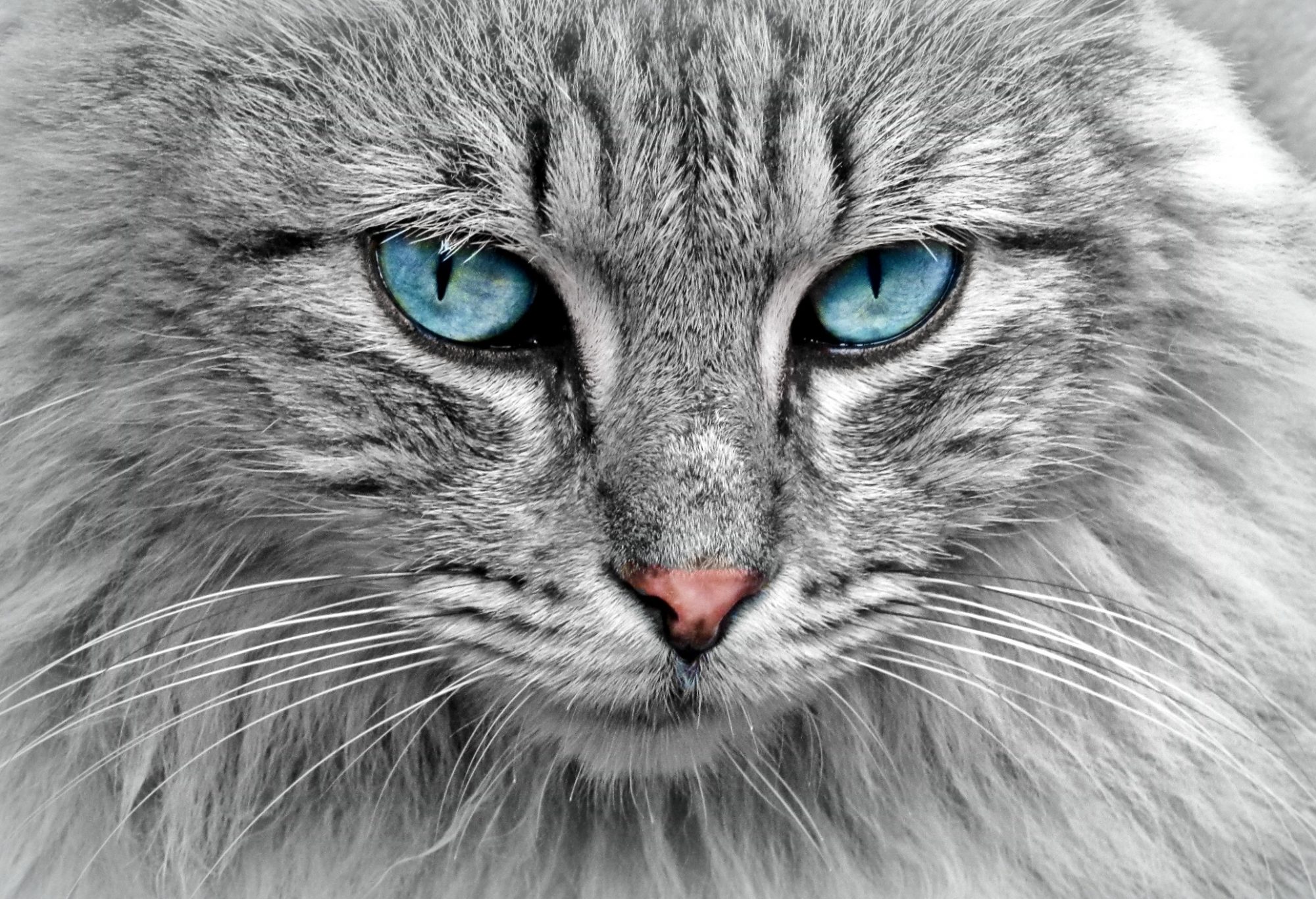
1. Keep your cat indoors
Some cat owners are offended when I suggest that they keep a cat indoors (usually after I repair a broken bone). “But he enjoys the great outdoors! It would be cruel to lock him up!” they say. I understand the concern, but sadly we live in a world that is not designed to keep our cats safe. Keeping your cat indoors can prevent many injuries that would require surgical repair. These include getting hit by a car, breaking bones or getting into a fight with a variety of animals (wild or domestic).
2. Spay or neuter
Spaying females prior to their first heat cycle can almost eliminate the risk of breast cancer and does eliminate the risk of a deadly infection of the uterus, called pyometra. Neutering males reduces the level of male hormones, making your male cat less likely to run away, mark his territory and get into fights.
3. Kitty proof
Kitty proofing is easier said than done – yet critical. Any cat lover knows that cats can get in, on and around just about anything. But you can lessen the risk of trouble by keeping potential problems away. Lock up all strings, ribbons and sewing supplies to avoid the risk of swallowing deadly “linear foreign bodies.” Clean up small toys, especially if you have young children! Hair ties are a classic culprit!
Block off windows, balconies and lofts to lessen the risk of falling. Sadly, cats don’t always land on their feet.
4. Proper nutrition
Proper nutrition can prevent bladder stones or urinary blockage, which can be life-threatening in male cats. Many popular diets with creative names do not have appropriate or any research behind them.
It’s actually a joke among vets! The marketing is brilliant, the TV commercials are convincing, but the science is often lacking.
The best way to be sure your cat is on the right diet is to ask your family vet.
5. Weight control
I currently have a patient with a torn Achilles tendon in the ankle. He weighs 24 lbs!
Overweight and obese cats can have countless health problems. The extra weight can cause wear and tear on joints, ligaments and tendons. It has also been linked to urinary blockage, which may require surgery.
Phil Zeltzman, DVM, DACVS, CVJ, Fear Free Certified

Dr. Phil Zeltzman is a traveling veterinary surgeon in Pennsylvania & New Jersey. An award-winning author, he loves to share his adventures in practice along with information about vet medicine and surgery that can really help your pets. Dr. Zeltzman specializes in orthopedic, neurologic, cancer, and soft tissue surgeries for dogs, cats, and small exotics. By working with local family vets, he offers the best surgical care, safest anesthesia, and utmost pain management to all his patients. Sign up to get an email when he updates his blog, and follow him on Facebook, too!

